Denmark ICT Market Size
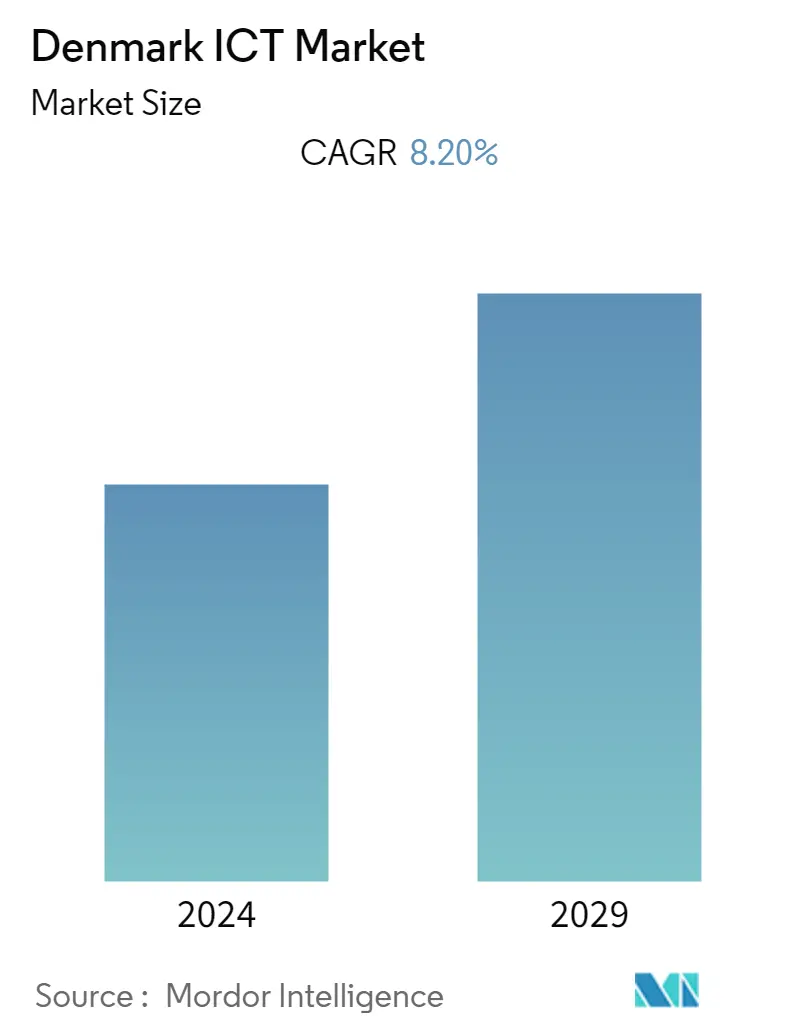
| Study Period | 2019 - 2029 |
| Base Year For Estimation | 2023 |
| Forecast Data Period | 2024 - 2029 |
| Historical Data Period | 2019 - 2022 |
| CAGR | 8.20 % |
| Market Concentration | Medium |
Major Players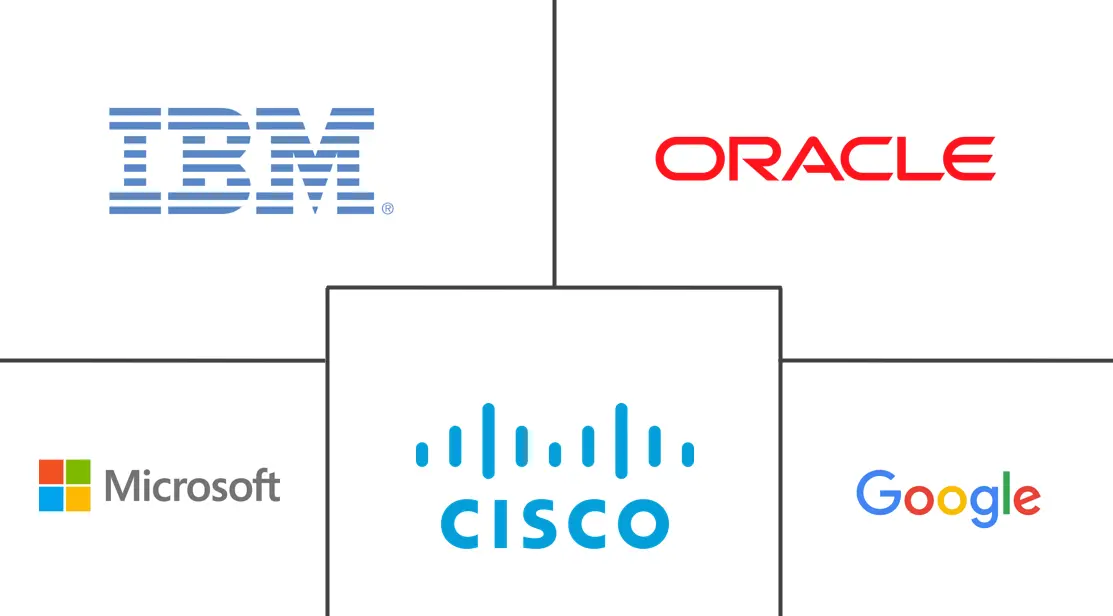
*Disclaimer: Major Players sorted in no particular order |
Denmark ICT Market Analysis
The Danish ICT market is expected to register a CAGR of 8.2% over the forecasted period. The Danish ICT landscape is changing at an unprecedented rate, owing mostly to the adoption and proliferation of novel apps and devices. Innovative technology developments such as mobility, cloud computing, analytics, and social media result in unique value chains and business models by establishing flexible organizations and improving the consumer experience. With more people using the Internet, broadband, and mobile phones, the ICT market can grow all over the country.
- Denmark's central, regional, and local governments have agreed on a new joint government digital strategy for 2022-2025. The strategy includes addressing labor shortages, mitigating climate change, and promoting digital inclusion. Denmark has one of the most digitized public sectors in the world. This is mainly due to the public sector's strong collaboration over the last two decades. Central, regional, and local governments have now approved the sixth Joint Government Digital Strategy.
- Recently, the Danish government signed the Berlin Declaration on Digital Society and Value-Based Digital Government, reaffirming its commitment, along with other EU Member States, to foster digital transformation so that citizens and businesses can take advantage of the benefits and opportunities provided by modern digital technologies. The Declaration aspires to contribute to a value-based digital transformation in European countries by addressing and promoting digital participation and inclusion. Such collaborations are expected to propel the market under consideration.
- To accelerate AI research in Denmark and gain more experience with the technology, specific goals have been established in four priority areas: health, energy and utilities, agriculture, and transportation. Furthermore, the country's AI strategy includes 24 programs across both the public and private sectors. DKK 60 million is set aside in the strategy for new ventures. Several public-sector hallmark AI projects, for example, are being carried out in collaboration with municipalities, regions, and private firms.
- During the COVID-19 epidemic, Denmark's public digital infrastructure proved its importance. With a significant degree of remote labor inside the state, regions, and municipalities, the digital infrastructure has enabled public service to stay at a high level. Furthermore, in response to COVID-19, the government launched a number of new digital services, including a contact-tracing app and digital booking of tests and vaccines. Furthermore, due to the pandemic, Danish individuals can now download their driving license from a mobile app and leave their physical driving license at home. People in Denmark have immediately adopted the new app, with over 500 000 downloads in the first 24 hours, about 750 000 in the first week, and now over 1 million.
- The increasing use of technologies such as cloud computing has led to the development of high-quality cloud-based applications. Cloud computing, which provides pay-as-you-go, low-cost computing resources, is rapidly gaining momentum as an alternative to traditional information technology (IT)-based organizations. As more users migrate their applications to cloud environments, service level agreements (SLAs) between customers and cloud providers become an essential factor to consider. Due to the dynamic nature of the cloud, quality of service (QoS) attributes must be constantly monitored to meet SLAs. As a result, cloud computing faces a QoS challenge. Specifically, how the service provider ensures her QoS is sufficient for cloud services.
Denmark ICT Market Trends
This section covers the major market trends shaping the Denmark ICT Market according to our research experts:
Digitalization Drives the Market
- Digital skills are essential for society's and the economy's continuing and effective digital transformation. The Danish Government Digitization Partnership will suggest how Denmark should harness and exploit its future technological potential. It contains nine recommendations on digital skills in education, the labor force, and digital inclusion. Denmark presented its national digital strategy in May last year, including four initiatives based on the Partnership's digital skills and education recommendations.
- According to the European Commission, Denmark has a new broadband strategy that has been agreed upon at the political level. It recently replaced the previous strategy goal of network coverage of 100 Mbps download and 30 Mbps upload for all households and businesses. Last year, when coverage was 96%, the goal was almost met. The new strategy's aims are as follows: all houses and companies must have a 100/30 Mbps connection by 2025; 98% of households and businesses must have a 1 Gbps download speed by 2025; and take stock in 2025 to identify the needs and demand for gigabit speeds by 2030.
- Further, Denmark ranks eighth in the EU for public services and outperforms the EU average on all indicators. The percentage of e-government users climbed by 93% last year and remained significantly higher than the EU average of 65%. Denmark outperforms the rest of the EU in terms of pre-filled forms. Furthermore, digital public services for citizens (83 points) and businesses (89 points) outperform the EU averages of 75 and 82 points, respectively. The use of open data is at 91%, which is 10% higher than the EU average.
- Recently, Denmark launched several initiatives to accelerate digital transformation by improving digital technology integration for private and public sector organizations. Through SME digital enterprises, technologies such as PIM systems were used to reduce the need for large component stocks, resulting in cost savings. The initiatives demonstrate a strong determination to invest to achieve a rapid and effective digital transformation of the Danish economy and society.
- According to Microsoft, a survey was done to determine which industries have the greatest potential for artificial intelligence by 2030. According to 96 percent of respondents, the health and welfare technology sector placed first on the list.
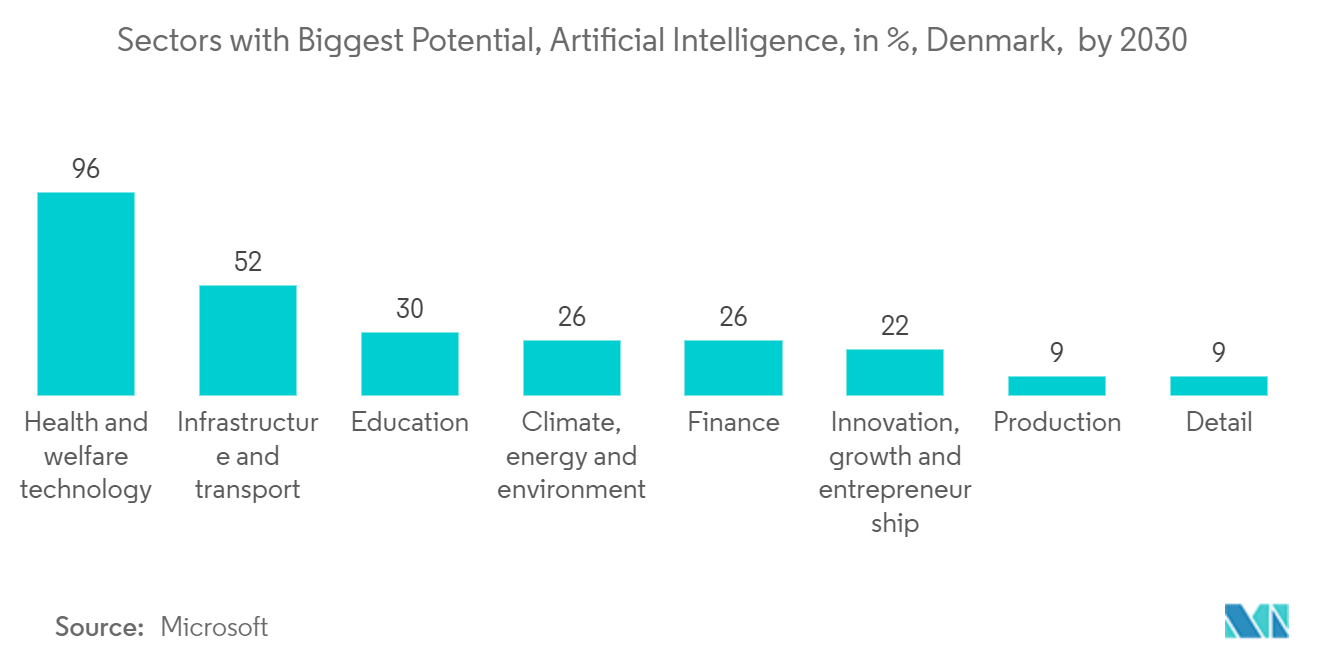
E-Commerce is One of the Factor Driving Market
- According to the International Trade Administration, about 70% of online buyers purchased apparel and sporting goods, demonstrating the prominence of fashion e-commerce in Denmark. On the other hand, the value of online fashion sales varies from season to season. Danes tend to spend more on clothes and accessories in the months before some of their most important national holidays, which happen in the second and fourth quarters of the year.
- According to PPRO, a digital payment infrastructure in Denmark, the share of GDP ascribed to e-commerce expenditure has consistently increased in recent years, rising from 5.6 percent of the European country's total GDP in 2017 to 7.8 percent in the last year. According to projections, e-commerce expenditure might reach 9.6 percent of the country's GDP by 2026.
- Fashion has always been an essential part of Danish culture, and while it is well-known worldwide, it is also one of the country's mainstays of e-commerce. French people are fairly price-sensitive, and businesses can benefit significantly from offers, discounts, and bargains. This appears to be true regardless of whether the brand is sold by a high-end or low-cost retailer. This is primarily because customers can discover enormous selections of brands online, whereas the discount store was only profitable as a physical location. Small and large brands have benefited from the ease of shipping.
- The increase in technological developments and the deployment of those technologies in e-commerce will give users a better user experience. For instance, augmented reality (AR) has been one of the significant drivers of e-commerce. This type of technology allows shoppers to see what they're looking for up close, which aids in their purchasing decision. In certain areas, such as fashion and home decor, AR significantly impacts the shopping experience since customers may get a better feel for an item without seeing it in person.
- Contextual and programmatic advertisements are witnessing gradual growth. To accommodate these changes, social networking sites are already altering their designs. Programmatic advertising is a new trend that uses datasets to determine the target audience. These advertisements are shown to a consumer-targeted audience. After some time, they are retargeted to create a higher ROI. It's about attracting the appropriate audience to the right ad at the right time. Compared to traditional retargeting, e-commerce business owners who use programmatic advertising have a better chance of reaching a wider audience.
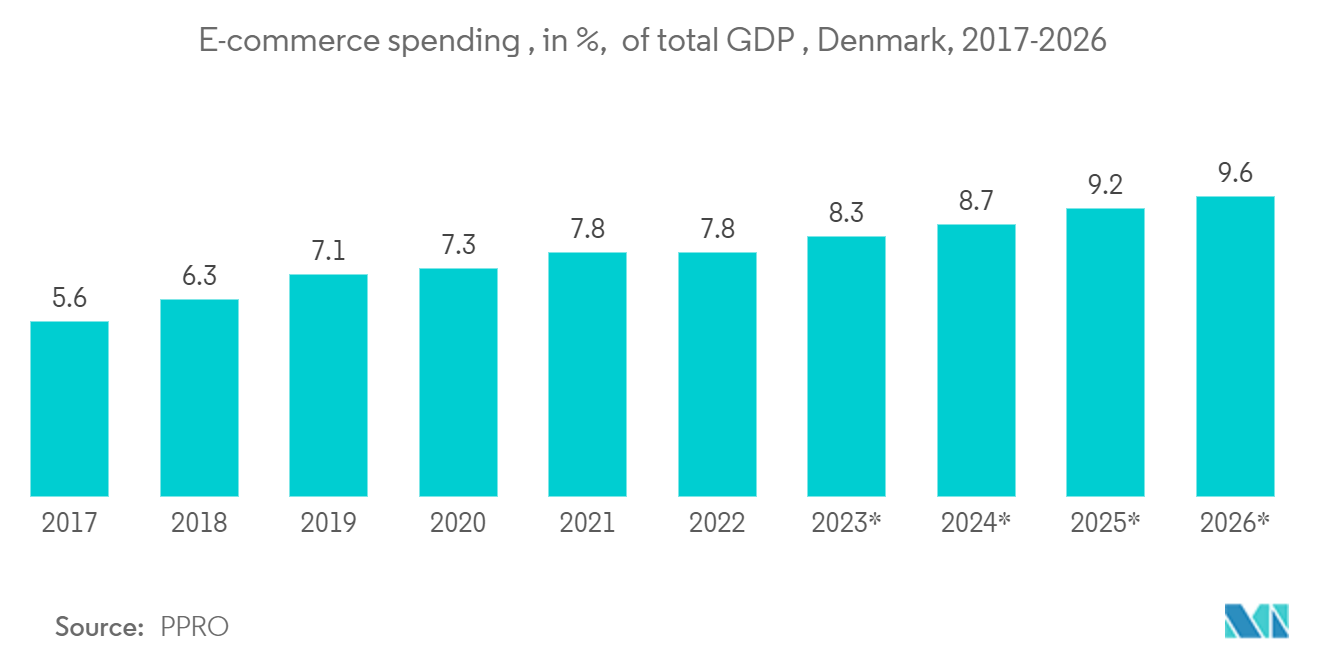
Denmark ICT Industry Overview
Denmark's ICT market is highly competitive and moving toward fragmentation, as the market currently consists of various significant players. Several key players in the ICT market are making constant efforts to bring about advancements. Some of the key developments in the market are:
In May 2022, Cisco announced that it had released the Cisco Cloud Controls Framework (CCF) to the public. Cisco CCF is a single framework that includes all of the national and international security compliance and certification requirements.
In July 2022, SOA People, one of Europe's premier consulting and services firms specializing in SAP solutions, will be on track to become one of Europe's top three SAP software and service suppliers. SOA People is a member of United VARs in France and a leading European Platinum SAP partner. By buying 51% of 2BM, a Danish provider of SAP and related technologies and a member of United VARs in Denmark, SOA People is expanding its Nordic operations and SAP software capabilities.
Denmark ICT Market Leaders
-
IBM Corporation
-
Oracle
-
Microsoft Corporation
-
Cisco Systems
-
Google LLC
*Disclaimer: Major Players sorted in no particular order
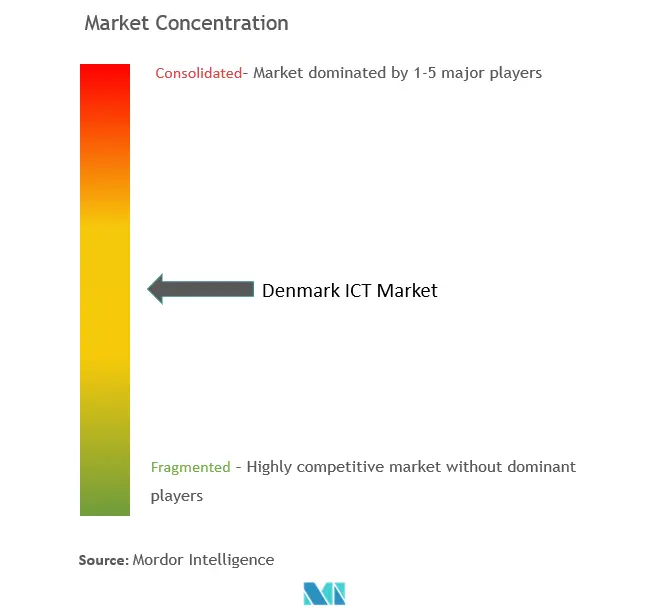
Denmark ICT Market News
- September 2022: Microsoft and Novo Nordisk formed a new strategic partnership to combine Microsoft's computational services, cloud, and artificial intelligence (AI) with Novo Nordisk's medical research, development, and data science.
- October 2022: Microsoft is changing the license conditions for its cloud services in Europe. These modifications are meant to let cloud service providers compete with Microsoft. This is most likely a retaliation for Microsoft's complaints to EU antitrust regulators. That's because cloud service providers in Germany, Italy, Denmark, and France are likely to have filed complaints with the EU Competition Commission against Microsoft.
- November 2022: Coop Danmark, a Danish retail firm, has replaced existing host solutions with a new backend IT infrastructure based on SAP S/4HANA. During the implementation, KPS offered invaluable assistance. Consequently, Coop reaps various benefits, including more efficient processes, cheaper working capital, improved supplier management, optimal assortment availability, and faster time-to-market IT innovations.
Denmark ICT Market Report - Table of Contents
1. INTRODUCTION
- 1.1 Market Definition and Scope
- 1.2 Study Assumptions
2. RESEARCH METHODOLOGY
3. EXECUTIVE SUMMARY
4. MARKET INSIGHTS
- 4.1 Market Overview
- 4.2 Industry Stakeholder Analysis
-
4.3 Industry Attractiveness-Porter's Five Forces Analysis
- 4.3.1 Bargaining Power of Suppliers
- 4.3.2 Bargaining Power of Consumers
- 4.3.3 Threat of New Entrants
- 4.3.4 Threat of Substitute Products
- 4.3.5 Intensity of Competitive Rivalry
- 4.4 Impact of COVID-19 on the Market
5. MARKET DYNAMICS
-
5.1 Market Drivers
- 5.1.1 Consistent Digital Transformation Initiatives
- 5.1.2 Robust Telecommunication Network
-
5.2 Market Restrain
- 5.2.1 Concerns Relating To Economic Crisis Across the Country
6. KEY TECHNOLOGY INVESTMENTS
- 6.1 Cloud Technology
- 6.2 Artificial Intelligence
- 6.3 Cyber Security
- 6.4 Digital Services
7. MARKET SEGMENTATION
-
7.1 By Type
- 7.1.1 Hardware
- 7.1.2 Software
- 7.1.3 IT Services
- 7.1.4 Telecommunication Services
-
7.2 By Size of Enterprise
- 7.2.1 Small and Medium Enterprises
- 7.2.2 Large Enterprises
-
7.3 By Industry Vertical
- 7.3.1 BFSI
- 7.3.2 IT and Telecom
- 7.3.3 Government
- 7.3.4 Retail and E-commerce
- 7.3.5 Manufacturing
- 7.3.6 Energy and Utilities
- 7.3.7 Other Industry Verticals
8. COMPETITIVE LANDSCAPE
-
8.1 Company Profiles
- 8.1.1 IBM Corporation
- 8.1.2 Oracle
- 8.1.3 Microsoft Corporation
- 8.1.4 Cisco Systems
- 8.1.5 Google LLC
- 8.1.6 SAP
- 8.1.7 Capgemini
- 8.1.8 Tata Consultancy Services
- 8.1.9 Amazon
- 8.1.10 Cognizant Technology Soutions
- 8.1.11 Dell Technologies
- 8.1.12 Hewlett Packard Enterprise
- *List Not Exhaustive
9. INVESTMENT ANALYSIS
10. FUTURE OF THE MARKET
** Subject To AvailablityDenmark ICT Industry Segmentation
Information and communications technology (ICT) is an extended term for information technology (IT) that encompasses a wide range of hardware, software, internet- and telecommunications-based services, social networking, media applications, and so on. The technology allows users to access, retrieve, store, send, and manipulate information in digital form. ICT technology has become more popular as the need for more advanced solutions like IoT, cloud computing, big data, content management, and so on has grown.
Denmark's ICT market is classified according to type (hardware, software, IT services, and telecommunication services), enterprise size (small and medium enterprises, large enterprises), and end-user vertical (BFSI, IT & Telecom, Government, Retail and E-Commerce, Manufacturing, Energy, and Utilities).
The market sizes and forecasts are provided in terms of value (USD million) for all the above segments.
| By Type | Hardware |
| Software | |
| IT Services | |
| Telecommunication Services | |
| By Size of Enterprise | Small and Medium Enterprises |
| Large Enterprises | |
| By Industry Vertical | BFSI |
| IT and Telecom | |
| Government | |
| Retail and E-commerce | |
| Manufacturing | |
| Energy and Utilities | |
| Other Industry Verticals |
Denmark ICT Market Research FAQs
What is the current Denmark ICT Market size?
The Denmark ICT Market is projected to register a CAGR of 8.20% during the forecast period (2024-2029)
Who are the key players in Denmark ICT Market?
IBM Corporation, Oracle, Microsoft Corporation, Cisco Systems and Google LLC are the major companies operating in the Denmark ICT Market.
What years does this Denmark ICT Market cover?
The report covers the Denmark ICT Market historical market size for years: 2019, 2020, 2021, 2022 and 2023. The report also forecasts the Denmark ICT Market size for years: 2024, 2025, 2026, 2027, 2028 and 2029.
Denmark ICT Industry Report
Statistics for the 2024 Denmark ICT market share, size and revenue growth rate, created by Mordor Intelligence™ Industry Reports. Denmark ICT analysis includes a market forecast outlook to 2029 and historical overview. Get a sample of this industry analysis as a free report PDF download.



